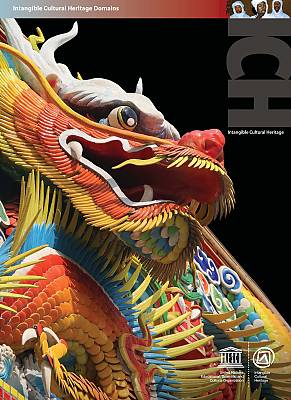UNESCO’s 2003 Convention for the Safeguarding of the Intangible Cultural Heritage proposes five broad ‘domains’ in which intangible cultural heritage is manifested:
- Oral traditions and expressions, including language as a vehicle of the intangible cultural heritage;
- Performing arts;
- Social practices, rituals and festive events;
- Knowledge and practices concerning nature and the universe;
- Traditional craftsmanship.

© UNESCO
Instances of intangible cultural heritage are not limited to a single manifestation and many include elements from multiple domains. Take, for example, a shamanistic rite. This might involve traditional music and dance, prayers and songs, clothing and sacred items as well as ritual and ceremonial practices and an acute awareness and knowledge of the natural world. Similarly, festivals are complex expressions of intangible cultural heritage that include singing, dancing, theatre, feasting, oral tradition and storytelling, displays of craftsmanship, sports and other entertainments. The boundaries between domains are extremely fluid and often vary from community to community. It is difficult, if not impossible, to impose rigid categories externally. While one community might view their chanted verse as a form of ritual, another would interpret it as song. Similarly, what one community defines as ‘theatre’ might be interpreted as ‘dance’ in a different cultural context. There are also differences in scale and scope: one community might make minute distinctions between variations of expression while another group considers them all diverse parts of a single form.
While the Convention sets out a framework for identifying forms of intangible cultural heritage, the list of domains it provides is intended to be inclusive rather than exclusive; it is not necessarily meant to be ‘complete’. States may use a different system of domains. There is already a wide degree of variation, with some countries dividing up the manifestations of intangible cultural heritage differently, while others use broadly similar domains to those of the Convention with alternative names. They may add further domains or new sub-categories to existing domains. This may involve incorporating ‘sub-domains’ already in use in countries where intangible cultural heritage is recognized, including ‘traditional play and games’, ‘culinary traditions’, ‘animal husbandry’, ‘pilgrimage’ or ‘places of memory’.